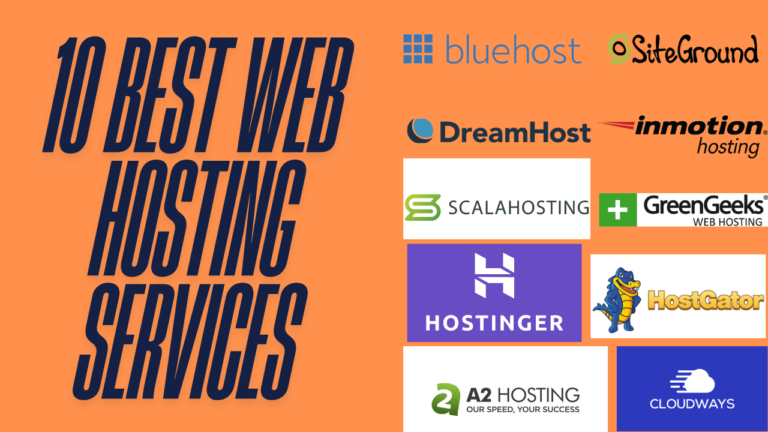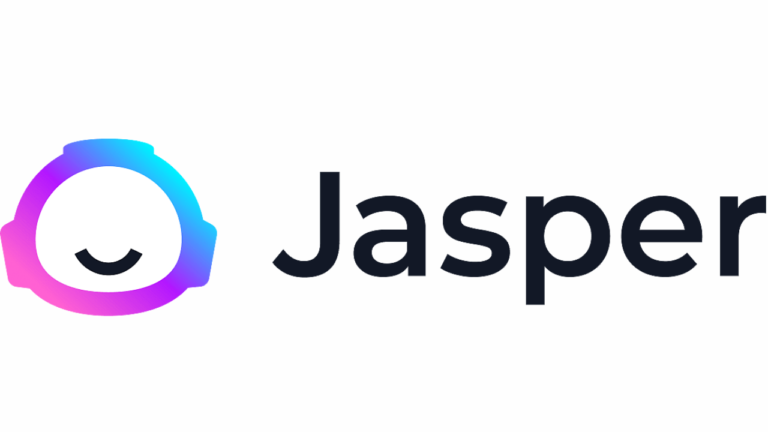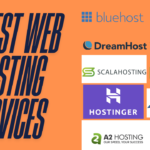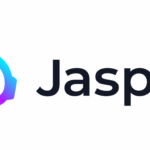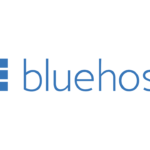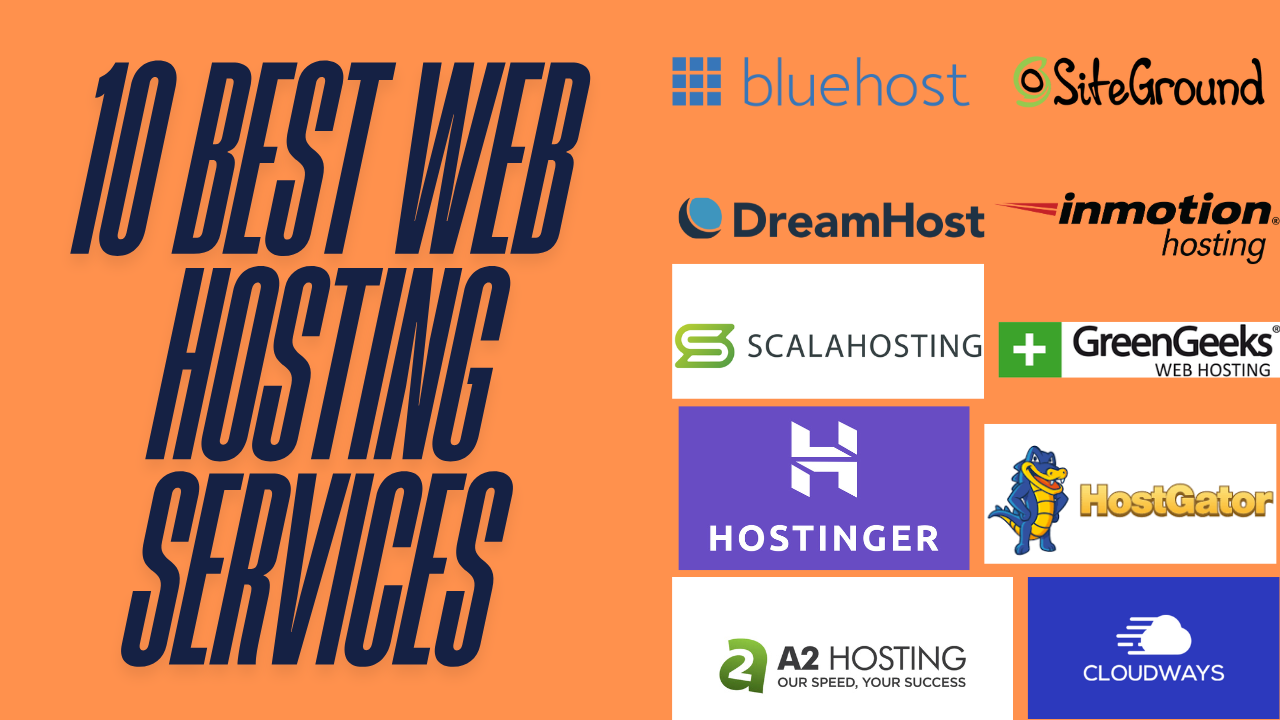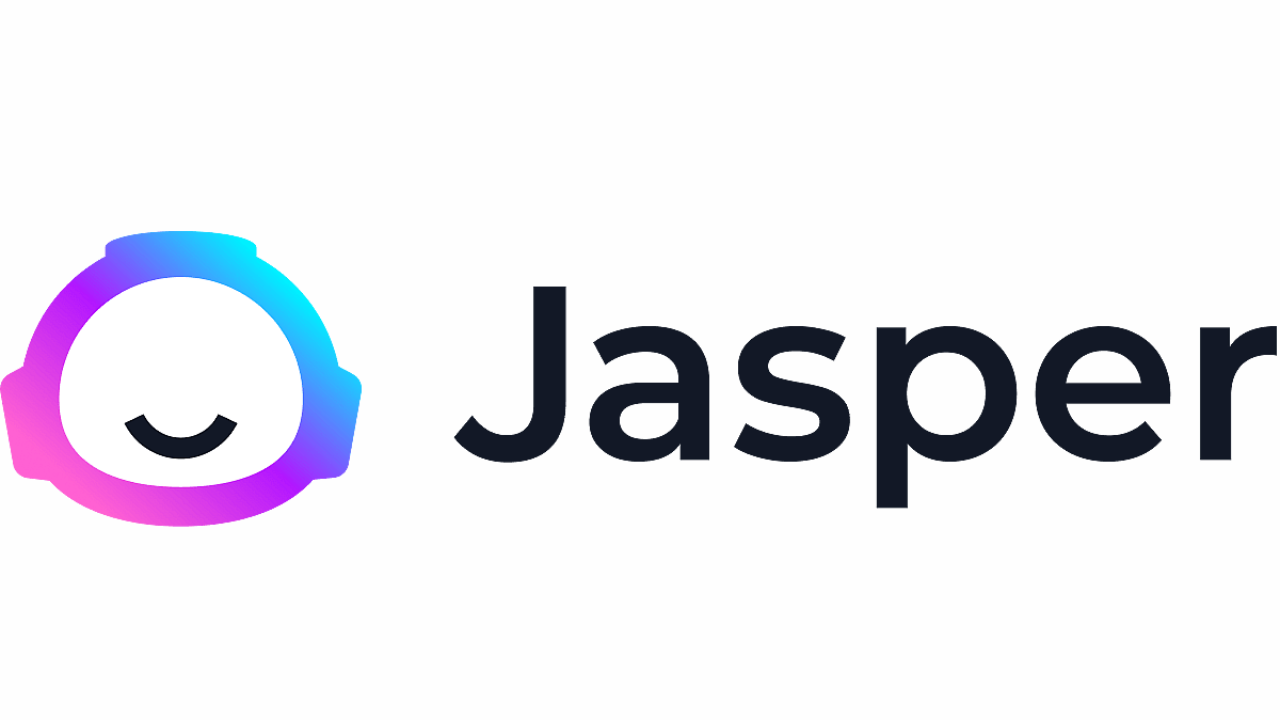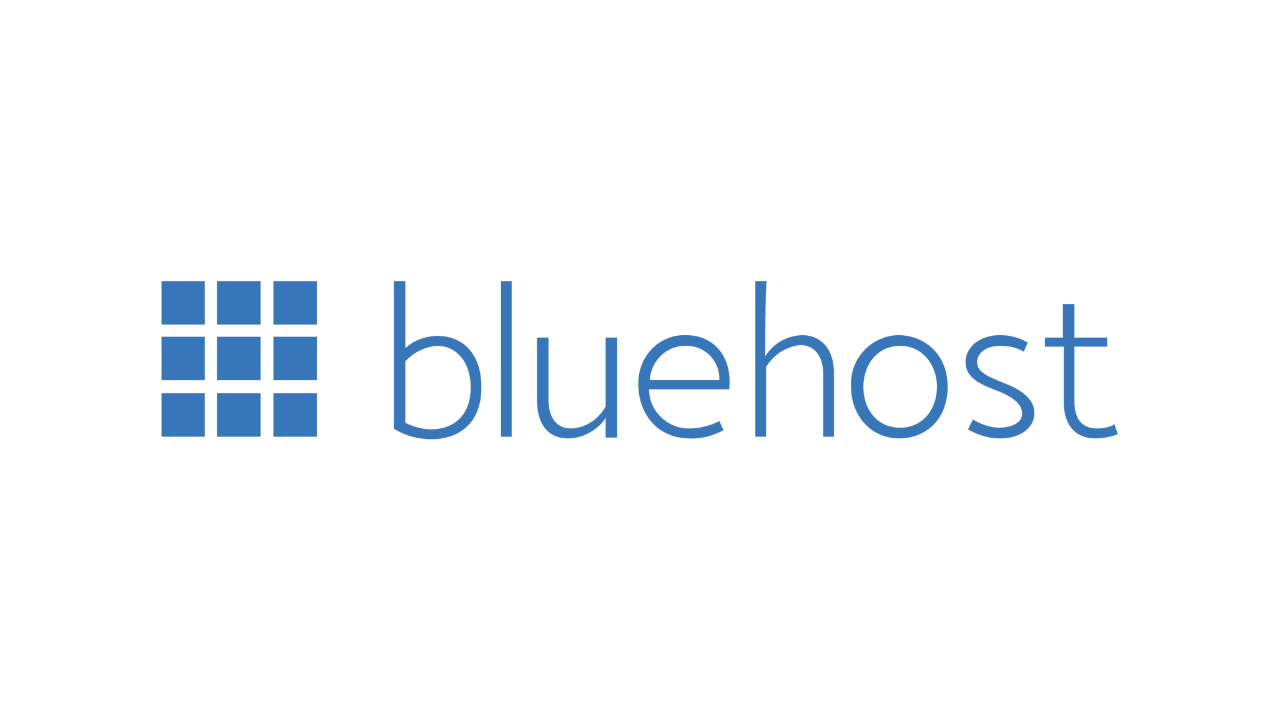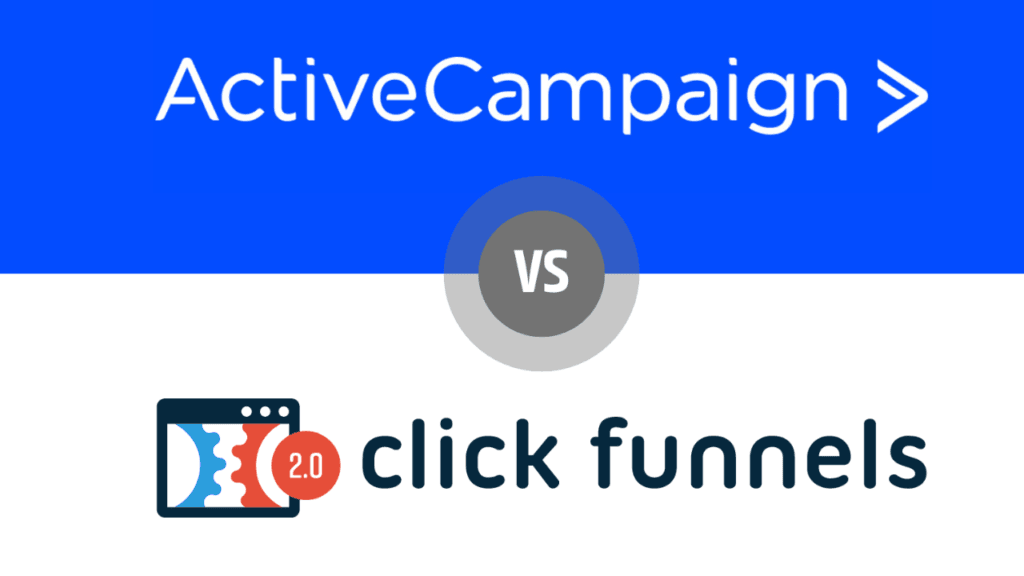
If you’re looking to streamline your marketing efforts and boost conversions, choosing the right platform is crucial. ActiveCampaign vs ClickFunnels are two of the most popular tools in the marketing world today, but they serve different purposes. In this blog post, we’ll break down the key features, pros, and cons of each platform, helping you determine which one best fits your business needs. Whether you’re focused on email marketing and automation or building high-converting sales funnels, we’ve got you covered.
Overview of ActiveCampaign and ClickFunnels
When comparing ActiveCampaign vs ClickFunnels, it’s essential to understand that each platform serves different primary purposes, even though they overlap in certain areas. ActiveCampaign is primarily a marketing automation and customer relationship management (CRM) platform designed to help businesses improve customer engagement through email marketing, segmentation, and automation workflows. ClickFunnels, on the other hand, is focused on sales funnel building, providing tools to guide potential customers through the purchasing process with features tailored to conversions and landing pages.
ActiveCampaign: Marketing Automation and CRM Powerhouse
When comparing ActiveCampaign vs ClickFunnels, ActiveCampaign was designed to simplify complex marketing automation. With robust CRM features, it enables businesses to manage contacts, track customer interactions, and create personalized email campaigns. It’s ideal for companies looking to streamline their marketing efforts, engage their audience more effectively, and nurture leads over time. ActiveCampaign’s automation workflows allow users to trigger specific actions based on customer behaviors, which is a powerful feature for personalized marketing.
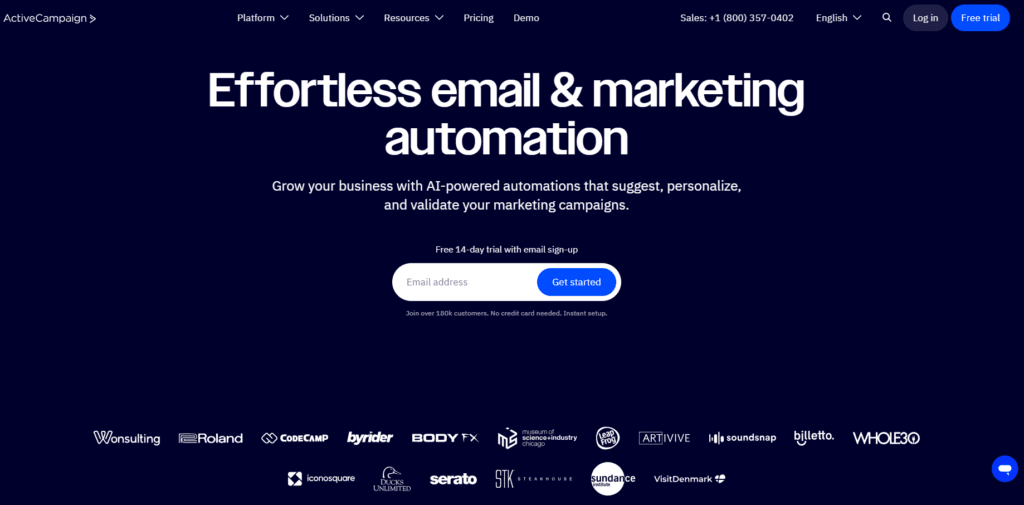
ClickFunnels: Focused on Conversions and Sales Funnels
When comparing ActiveCampaign vs ClickFunnels, ClickFunnels is a dedicated sales funnel builder aimed at helping businesses convert leads into customers. It enables users to create step-by-step sales processes and offers pre-designed, customizable funnel templates. With tools for landing page creation, checkout integration, and upsell/downsell options, ClickFunnels is geared toward entrepreneurs, marketers, and small businesses seeking an efficient way to build online sales funnels without needing extensive design or technical skills.
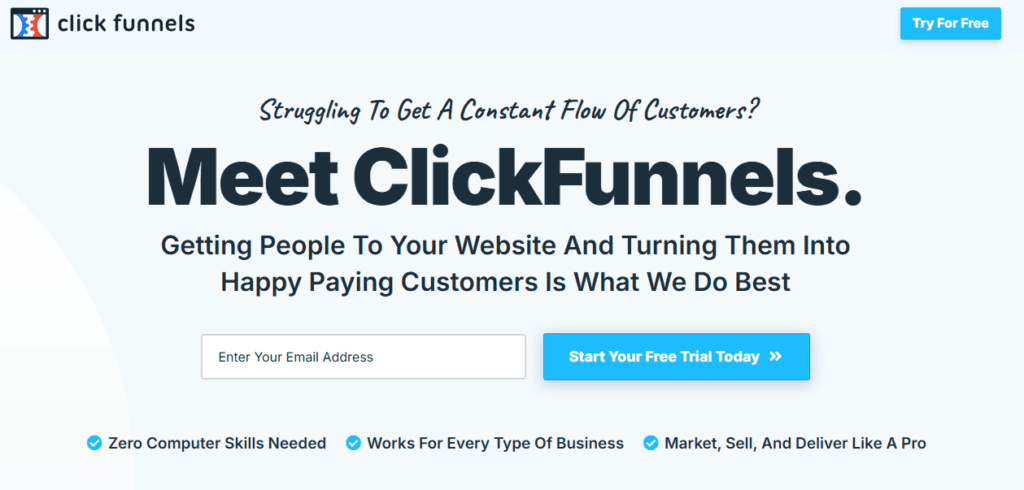
Key Differences at a Glance
In short, while ActiveCampaign excels at helping businesses automate and optimize customer interactions over time, ClickFunnels is more specialized in guiding customers through specific purchasing steps. Companies needing a full-scale marketing automation suite might prefer ActiveCampaign, while those focused on maximizing sales through structured funnels might find ClickFunnels better suited to their needs.
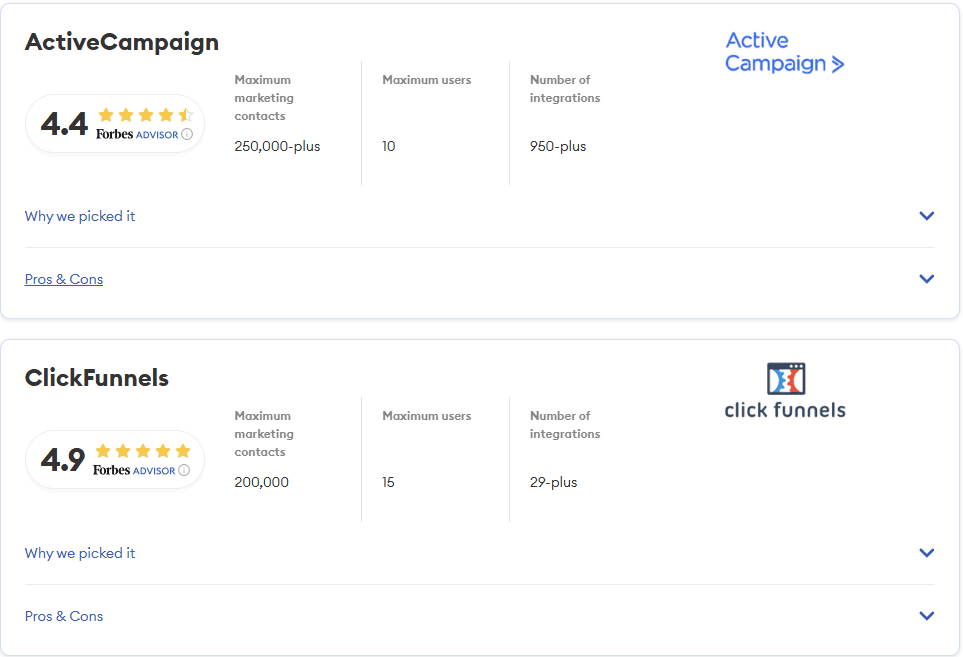
Features and Functionality
In the ActiveCampaign vs ClickFunnels comparison, understanding the features and functionality of each platform is crucial to determining which one aligns best with your business goals. While both tools offer powerful capabilities, they cater to different primary functions and workflows.
ActiveCampaign: Advanced Marketing Automation and CRM
When comparing ActiveCampaign vs ClickFunnels, ActiveCampaign is known for its extensive suite of marketing automation and CRM features. It allows businesses to create complex automation sequences, segment contacts with precision, and nurture customer relationships over time. Key features include:
- Email Marketing: Advanced email campaign options with tools for personalization, segmentation, and A/B testing.
- Automation Workflows: Customizable workflows that trigger emails, SMS, or other actions based on customer behaviors and engagement.
- Customer Relationship Management (CRM): A built-in CRM to manage customer data, track interactions, and handle sales processes directly within the platform.
- Lead Scoring: The ability to assign scores to contacts based on interactions, helping identify high-potential leads.
- Machine Learning and Predictive Tools: ActiveCampaign offers predictive sending and other AI-based tools to optimize campaign performance.
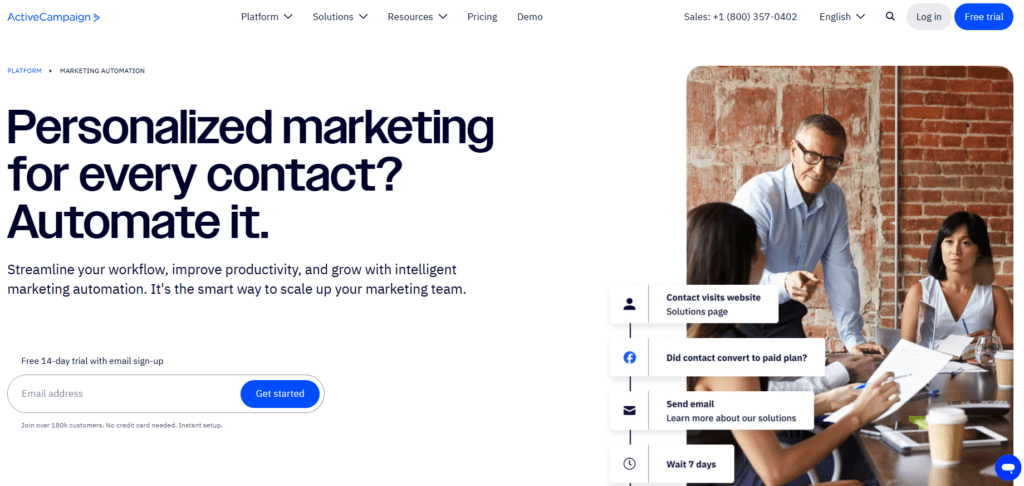
ClickFunnels: Sales Funnel and Conversion-Focused Features
When comparing ActiveCampaign vs ClickFunnels, ClickFunnels is geared toward sales funnel creation and conversion optimization. Unlike ActiveCampaign, it’s designed specifically for guiding potential customers through structured sales funnels. Key features include:
- Funnel Builder: A step-by-step funnel creator with templates for each funnel stage, like opt-in, sales, and checkout pages.
- Landing Pages and Templates: Pre-built, customizable landing page templates optimized for conversions.
- One-Click Upsells and Downsells: Options to increase revenue by adding upsells, downsells, and order bumps during checkout.
- A/B Testing for Funnels: Easy-to-implement split testing to compare different funnel pages and improve conversion rates.
- Affiliate Management: A built-in affiliate program feature to recruit and manage affiliates for promoting products.
Key Differences in Features
In comparing ActiveCampaign vs ClickFunnels features, it’s clear that ActiveCampaign is stronger in automation and CRM, making it ideal for businesses that prioritize long-term customer engagement and data-driven marketing. ClickFunnels, however, excels at creating highly focused, step-by-step sales funnels, appealing to businesses that want a straightforward solution for online sales.
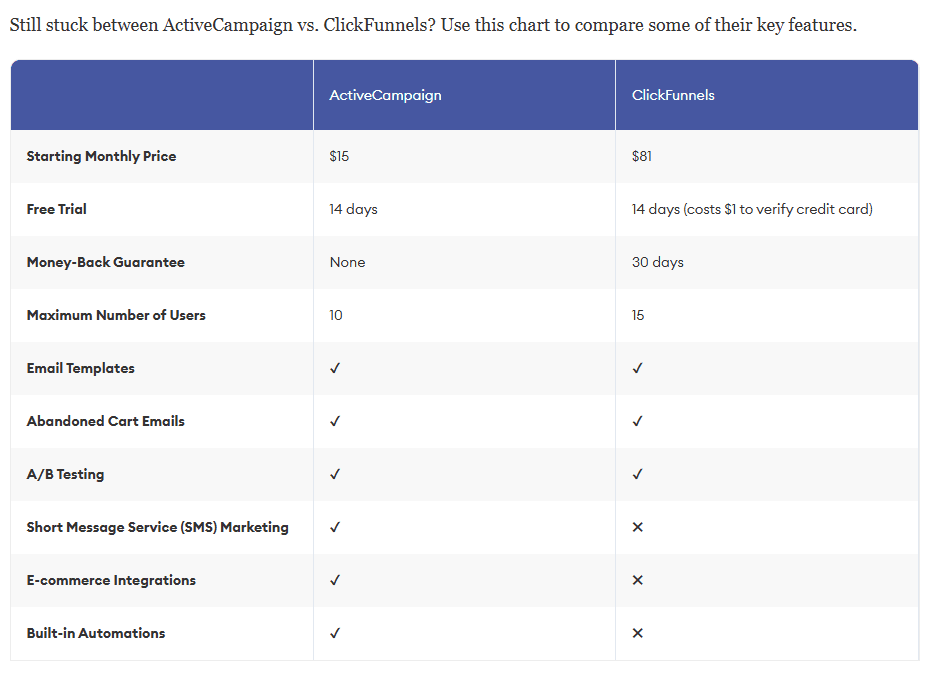
Email Marketing and Automation
When evaluating ActiveCampaign vs ClickFunnels for email marketing and automation, it’s important to note that each platform approaches these functions differently. ActiveCampaign is renowned for its email marketing capabilities, offering advanced automation features, while ClickFunnels provides basic email marketing tools mainly for funnel-based campaigns.
ActiveCampaign: Advanced Email Marketing and Automation
When comparing ActiveCampaign vs ClickFunnels, ActiveCampaign is a powerful choice for businesses seeking robust email marketing tools combined with advanced automation. It allows users to create highly targeted, personalized campaigns and set up complex automation workflows. Key email marketing and automation features include:
- Email Campaign Customization: Design options for newsletters, drip campaigns, and promotional emails, with tools for segmentation and personalization.
- Automated Workflows: A flexible workflow builder that enables users to automate various customer interactions, such as sending welcome emails, re-engagement messages, or abandoned cart reminders.
- Behavior-Based Triggers: Automation can be triggered based on customer actions like website visits, email opens, or form submissions, allowing for highly customized follow-ups.
- Predictive Sending: AI-driven features that send emails at optimal times based on each subscriber’s past behavior, maximizing open rates.
- Detailed Analytics: In-depth reporting on campaign performance, open rates, click-through rates, and customer engagement levels.
ClickFunnels: Basic Email Marketing for Funnel Support
When comparing ActiveCampaign vs ClickFunnels, ClickFunnels includes basic email marketing features, primarily designed to support its funnel-building capabilities. While it lacks the advanced automation of ActiveCampaign, it still provides essential tools for engaging leads within the sales funnel. Key email marketing features include:
- Follow-Up Funnels: ClickFunnels’ native email system, Follow-Up Funnels, enables users to send automated emails to leads and customers within their funnels.
- Simple Triggers: Automation is mostly limited to funnel-based actions, such as sending emails after an opt-in, purchase, or form submission.
- Basic Segmentation: Limited options for segmenting leads within funnels, focusing mainly on the stage of the funnel.
- Upsell and Cross-Sell Emails: ClickFunnels allows upsell and cross-sell emails to enhance conversion opportunities after a customer’s initial purchase.
Key Differences in Email Marketing and Automation
When comparing ActiveCampaign vs ClickFunnels, ActiveCampaign stands out for its sophisticated automation capabilities, making it ideal for businesses that need comprehensive email marketing with complex workflows. ClickFunnels, however, is more suitable for simpler, funnel-based email marketing, appealing to those focused on direct sales conversions.
Sales Funnel Building
In a comparison of ActiveCampaign vs ClickFunnels for sales funnel building, it becomes clear that ClickFunnels is specifically designed for this purpose, while ActiveCampaign provides more basic support for funnel stages within its broader marketing suite. This makes ClickFunnels a popular choice for users whose primary focus is creating and optimizing sales funnels.
ClickFunnels: Comprehensive Sales Funnel Building
When comparing ActiveCampaign vs ClickFunnels, ClickFunnels is a specialized sales funnel builder designed to help users create effective, step-by-step funnels that guide prospects through the customer journey toward making a purchase. Key sales funnel features include:
- Funnel Templates: ClickFunnels offers a wide variety of pre-designed templates tailored to different types of funnels, including lead capture, sales, and webinar funnels. Each template is customizable, allowing users to adjust the design and messaging to fit their brand.
- Drag-and-Drop Funnel Builder: ClickFunnels’ intuitive drag-and-drop builder lets users create multi-step funnels without needing coding skills. Each stage of the funnel, from landing pages to checkout, can be customized to optimize conversions.
- Conversion-Focused Elements: ClickFunnels includes built-in tools to boost sales, such as countdown timers, pop-ups, and one-click upsells. These elements help keep leads engaged and guide them toward completing the purchase.
- Order Bumps and Upsells/Downsells: Users can add upsells, downsells, and order bumps during the checkout process to increase the average order value.
- Funnel Analytics: ClickFunnels provides detailed analytics for each funnel, showing conversion rates, average order value, and other performance metrics to help users optimize their funnels over time.
ActiveCampaign: Basic Funnel Support Through Automation
When comparing ActiveCampaign vs ClickFunnels, ActiveCampaign is not a dedicated funnel builder, it does allow users to support a sales funnel process using its marketing automation and CRM features. Businesses can create email sequences and automate customer touchpoints to nurture leads at various stages. Key features for basic funnel support include:
- Automated Sequences: ActiveCampaign lets users create automated email sequences that can act as a nurturing funnel, moving leads through different stages based on their behavior and engagement.
- Customer Journey Mapping: The automation workflows in ActiveCampaign enable users to map out a basic funnel-like journey, using triggers and actions to guide leads from awareness to conversion.
- Lead Scoring: Lead scoring helps users identify high-potential leads and prioritize follow-up actions, which can complement a funnel process.
- Integration with Landing Page Tools: While ActiveCampaign doesn’t have a built-in funnel builder, it integrates with third-party tools like Unbounce and Leadpages for users who want to add customized landing pages to their automated email funnels.
Key Differences in Sales Funnel Building
When comparing ActiveCampaign vs ClickFunnels in terms of sales funnel building, ClickFunnels clearly leads as a comprehensive tool for creating, customizing, and optimizing sales funnels. Its features are tailored to sales and conversion-focused workflows, making it the go-to choice for users who prioritize structured funnels. ActiveCampaign, on the other hand, can support simpler funnels through its email automation and CRM tools, making it suitable for businesses looking to nurture leads over time without dedicated funnel-building features.
Landing Page Design and Customization
In the ActiveCampaign vs ClickFunnels comparison, landing page design and customization are important factors, as both platforms offer distinct approaches. ClickFunnels is focused on creating highly customizable, conversion-optimized landing pages as part of its funnel-building toolkit, whereas ActiveCampaign offers limited landing page features primarily geared toward enhancing email marketing campaigns.
ClickFunnels: Robust Landing Page Design for Conversion
When comparing ActiveCampaign vs ClickFunnels, ClickFunnels provides extensive tools for creating landing pages that are optimized for conversions. Each page is designed to work within a sales funnel to capture leads, encourage sign-ups, and drive sales. Key landing page design and customization features include:
- Drag-and-Drop Editor: ClickFunnels’ intuitive editor allows users to design pages with ease, using a drag-and-drop interface that requires no coding skills. Elements such as text, images, buttons, and forms can be easily added and rearranged.
- Wide Range of Templates: ClickFunnels offers a large selection of professionally designed templates optimized for different goals, such as lead generation, product sales, and webinar registrations. Templates can be fully customized to match a brand’s style.
- Conversion-Optimized Elements: ClickFunnels includes elements like countdown timers, pop-ups, videos, and testimonials that can be added to pages to increase engagement and conversions.
- Responsive Design: All landing pages in ClickFunnels are mobile-responsive, ensuring they look and perform well on any device, which is crucial for maximizing conversions across different platforms.
- A/B Testing: Users can run split tests on different landing page versions to see which design or copy performs best, helping to optimize the page for higher conversion rates.
ActiveCampaign: Basic Landing Pages for Email Campaigns
When comparing ActiveCampaign vs ClickFunnels, landing page functionality is more limited, as it primarily supports basic pages to complement email marketing and automation campaigns. Key features for landing page design and customization include:
- Simple Landing Page Builder: ActiveCampaign offers a landing page builder that allows users to create straightforward pages for lead capture or event registration. The builder is less customizable compared to ClickFunnels, focusing on simplicity.
- Templates for Lead Generation: ActiveCampaign includes a selection of templates for basic use cases like sign-ups, which can be customized with text, images, and forms.
- Integrated with Automation: Landing pages in ActiveCampaign can be integrated with its automation workflows, allowing users to follow up automatically with leads who fill out a form or take another action on the page.
- Limited Customization Options: Customization is basic compared to ClickFunnels, with fewer options for adding advanced elements like countdown timers or pop-ups.
- Mobile-Friendly Pages: ActiveCampaign’s landing pages are mobile-responsive, ensuring accessibility on all devices, though customization for mobile optimization is limited.
Key Differences in Landing Page Design and Customization
When it comes to ActiveCampaign vs ClickFunnels for landing page design, ClickFunnels is the better choice for users focused on creating high-converting, fully customizable landing pages. With a wide range of templates and conversion-focused elements, ClickFunnels is ideal for businesses seeking an all-in-one funnel and landing page solution. ActiveCampaign’s landing pages, while functional, are more limited and best suited for simple lead capture and email sign-up forms as part of larger marketing campaigns.
Customer Relationship Management (CRM)
In a comparison of ActiveCampaign vs ClickFunnels for Customer Relationship Management (CRM) capabilities, ActiveCampaign is the stronger platform. ActiveCampaign is known for its full-featured CRM system, which enables users to manage and nurture customer relationships effectively, while ClickFunnels provides limited CRM tools that mainly support its funnel-building functions.
ActiveCampaign: Comprehensive CRM for Deep Customer Insights
When comparing ActiveCampaign vs ClickFunnels, ActiveCampaign offers a fully integrated CRM designed to streamline customer management, making it an ideal choice for businesses looking to develop long-term relationships with their audience. With a focus on detailed customer data, lead scoring, and engagement tracking, ActiveCampaign’s CRM is well-suited for managing sales pipelines and personalized communication. Key CRM features include:
- Contact Management and Segmentation: ActiveCampaign’s CRM allows users to organize and segment contacts based on various criteria, such as demographics, purchase history, and engagement level. This enables highly targeted communication and lead management.
- Sales Pipeline Tracking: The platform includes a visual pipeline for tracking deals, stages, and progress, which is beneficial for sales teams looking to monitor the status of each lead in the sales cycle.
- Lead Scoring: ActiveCampaign offers lead scoring, allowing users to assign scores to contacts based on their behaviors, such as email engagement or website activity. High-scoring leads can be prioritized for follow-up.
- Automated Task Management: Users can automate tasks like sending follow-up emails, scheduling calls, or creating reminders, ensuring that potential leads don’t fall through the cracks.
- Detailed Analytics and Reporting: ActiveCampaign’s CRM includes reporting tools for tracking metrics like deal value, sales cycle length, and conversion rates, giving users insights into the effectiveness of their customer interactions.
ClickFunnels: Basic CRM Features for Funnel-Focused Sales
When comparing ActiveCampaign vs ClickFunnels, ClickFunnels includes basic CRM capabilities to support its funnel-based structure. Its CRM tools are limited and primarily geared toward tracking leads and contacts within the sales funnels created on the platform. Key CRM features in ClickFunnels include:
- Contact Profiles Within Funnels: ClickFunnels allows users to view basic information about leads captured in funnels, including purchase history and engagement with funnel pages.
- Lead Management within Funnels: Leads are managed based on their actions within a funnel, like opt-ins or purchases, allowing users to follow up with targeted messages and offers.
- Customer Tagging and Segmentation: Although limited, ClickFunnels offers tagging to segment contacts for different follow-ups or campaigns, mainly within the context of specific funnels.
- Integration with External CRMs: Many businesses that use ClickFunnels for funnel building integrate with external CRMs like Salesforce or HubSpot for more advanced customer management, as ClickFunnels lacks full CRM functionality on its own.
Key Differences in CRM Capabilities
In comparing ActiveCampaign vs ClickFunnels for CRM, ActiveCampaign stands out as the platform with a full-featured CRM that offers detailed customer data, sales pipeline management, and automation tools to nurture relationships effectively. ClickFunnels, by contrast, has only basic CRM functionality, suitable for managing leads within funnels but lacking the in-depth customer relationship management that businesses often require for complex sales cycles. For users needing a dedicated CRM, ActiveCampaign is the superior choice, while ClickFunnels is better suited for simpler lead tracking within a funnel environment.
Suggested Image Placement:
- A side-by-side feature comparison table highlighting CRM capabilities such as lead scoring, sales pipeline, and contact segmentation.
E-commerce Capabilities
When evaluating ActiveCampaign vs ClickFunnels for e-commerce capabilities, the two platforms offer distinct approaches. ClickFunnels is designed with built-in e-commerce features focused on converting website visitors into buyers, while ActiveCampaign provides essential tools for supporting online sales through automation and integration with external e-commerce platforms.
ClickFunnels: Built-In E-commerce Tools for Sales Conversion
When comparing ActiveCampaign vs ClickFunnels, ClickFunnels offers a range of built-in e-commerce features designed to facilitate the entire sales process within a single funnel, making it an ideal choice for users seeking a streamlined approach to online sales. Key e-commerce capabilities in ClickFunnels include:
- Sales Funnel Creation for Products: ClickFunnels allows users to create dedicated sales funnels for individual products or services, guiding customers through the stages of awareness, consideration, and purchase.
- One-Click Upsells and Downsells: During checkout, ClickFunnels users can set up one-click upsells or downsells to increase the average order value by offering additional products or upgrades.
- Order Bumps: The platform provides an “order bump” feature, which allows users to present additional offers at the checkout page, increasing the likelihood of add-on sales.
- Integrated Payment Processing: ClickFunnels integrates with major payment processors like Stripe and PayPal, enabling users to process payments directly within their funnels.
- Affiliate Management: The platform includes a built-in affiliate program feature, allowing businesses to recruit and manage affiliates to promote their products, further boosting sales.
ActiveCampaign: E-commerce Support through Integrations and Automation
When comparing ActiveCampaign vs ClickFunnels, ActiveCampaign doesn’t offer dedicated e-commerce features within the platform but excels at supporting e-commerce operations through integrations and automated customer engagement. Key e-commerce support features in ActiveCampaign include:
- E-commerce Integrations: ActiveCampaign integrates seamlessly with popular e-commerce platforms like Shopify, WooCommerce, and BigCommerce, allowing users to connect customer data and track purchases directly within ActiveCampaign.
- Abandoned Cart Automation: Through integrations with e-commerce platforms, ActiveCampaign enables users to create abandoned cart recovery automations, sending follow-up emails to remind customers to complete their purchases.
- Product Recommendations: Using customer purchase data, ActiveCampaign can send personalized product recommendations, helping to boost cross-sell and upsell opportunities.
- Purchase-Based Segmentation: The platform’s CRM allows users to segment contacts based on purchase history, enabling highly targeted follow-ups, such as thank-you emails or re-engagement campaigns.
- Detailed Customer Insights: ActiveCampaign’s e-commerce reports provide insights into customer behaviors, such as buying frequency and average order value, helping businesses make informed decisions on their sales strategies.
Key Differences in E-commerce Capabilities
In comparing ActiveCampaign vs ClickFunnels for e-commerce, ClickFunnels stands out with its all-in-one approach, offering built-in features like sales funnels, upsells, and affiliate management to drive conversions within the platform. ActiveCampaign, while lacking direct e-commerce functionality, is an excellent choice for supporting e-commerce efforts through integrations, automated follow-ups, and customer segmentation, making it a solid companion for established e-commerce stores.
Analytics and Reporting
When comparing ActiveCampaign vs ClickFunnels for analytics and reporting, both platforms provide valuable insights into campaign performance, but they approach data tracking and reporting from different perspectives. ActiveCampaign excels in providing detailed customer and campaign analytics, whereas ClickFunnels is more focused on funnel performance and conversion tracking.
ActiveCampaign: Advanced Analytics for Campaigns and Customer Insights
When comparing ActiveCampaign vs ClickFunnels, ActiveCampaign offers comprehensive reporting tools that help businesses track customer interactions, measure campaign effectiveness, and analyze overall marketing performance. Key analytics and reporting features in ActiveCampaign include:
- Campaign Performance Reports: ActiveCampaign provides detailed reports on email campaigns, showing open rates, click-through rates, bounces, and other key metrics. These reports help users evaluate the effectiveness of their email marketing efforts.
- Customizable Dashboards: Users can create personalized dashboards that display key metrics such as revenue, engagement, and conversion rates. This customization helps businesses focus on the data most relevant to their goals.
- A/B Testing Reports: ActiveCampaign allows users to run A/B tests on emails and automation workflows, providing insights into which variations perform best in terms of open rates, click-through rates, and conversions.
- CRM Analytics: ActiveCampaign’s CRM provides reporting tools for tracking the sales pipeline, deal stages, and customer interactions. This data helps businesses optimize their sales efforts and customer relationship strategies.
- E-commerce Reports: ActiveCampaign’s integration with e-commerce platforms like Shopify and WooCommerce enables reporting on key sales metrics, such as average order value, total revenue, and repeat purchase rates.
ClickFunnels: Funnel-Focused Analytics for Conversion Tracking
When comparing ActiveCampaign vs ClickFunnels, ClickFunnels focuses its analytics on funnel performance and conversion tracking, providing users with insights into how well each stage of the funnel is performing. Key analytics and reporting features in ClickFunnels include:
- Funnel Performance Metrics: ClickFunnels tracks important funnel metrics such as opt-ins, sales, and conversions at each stage of the funnel. This allows users to see where leads drop off and optimize accordingly.
- A/B Testing for Funnels: Users can run split tests on their funnels to test different page versions, offers, or funnels, and see which ones lead to higher conversion rates.
- Sales Data: ClickFunnels provides data on sales transactions, including revenue generated from each funnel, which helps businesses measure the profitability of their funnels and marketing efforts.
- Affiliate Reporting: For businesses using ClickFunnels’ affiliate program, the platform provides reports on affiliate performance, including the number of referrals, commissions, and conversions made through affiliate links.
- User Behavior Tracking: ClickFunnels also tracks user behavior within funnels, allowing users to see which pages or steps in the funnel cause the most engagement or abandonment.
Key Differences in Analytics and Reporting
When comparing ActiveCampaign vs ClickFunnels for analytics and reporting, ActiveCampaign provides more advanced and comprehensive reporting tools that cover various aspects of email campaigns, customer relationships, and sales pipelines. This makes it ideal for businesses that need deep insights into their overall marketing and sales efforts. ClickFunnels, however, excels in funnel-centric reporting, providing detailed conversion metrics and insights to help users optimize their sales funnels and improve their conversion rates.
User Interface and Ease of Use
When evaluating ActiveCampaign vs ClickFunnels for user interface and ease of use, both platforms are designed to streamline processes for their respective users, but they take different approaches. ClickFunnels focuses on simplicity for funnel building, while ActiveCampaign provides a more robust interface that can handle complex automation and customer relationship management.
ActiveCampaign: Comprehensive Yet Intuitive
When comparing ActiveCampaign vs ClickFunnels, ActiveCampaign is known for its rich feature set, and while it may require a bit of a learning curve for new users, its interface is generally intuitive and well-organized. Key aspects of ActiveCampaign’s user interface and ease of use include:
- User-Friendly Dashboard: ActiveCampaign’s dashboard provides an easy-to-navigate overview of key metrics, recent activities, and campaigns. The clean design makes it simple for users to access essential functions without feeling overwhelmed by options.
- Drag-and-Drop Editor: Creating and editing email campaigns, automations, and landing pages is made easy with ActiveCampaign’s drag-and-drop editor. This feature allows users to design campaigns quickly without needing technical skills or coding knowledge.
- Streamlined Automation Builder: While ActiveCampaign offers advanced automation features, its visual automation builder makes it relatively easy to set up email sequences, workflows, and triggers. This is particularly useful for users who want to create complex marketing funnels without a steep learning curve.
- Integrated Support: ActiveCampaign offers access to in-app help, tutorials, and a robust knowledge base, making it easier for users to find guidance as they familiarize themselves with the platform.
ClickFunnels: Simple and Focused on Funnel Building
When comparing ActiveCampaign vs ClickFunnels, ClickFunnels is designed with simplicity in mind, providing an easy-to-use interface that helps users create sales funnels quickly and efficiently. Key aspects of ClickFunnels’ user interface and ease of use include:
- Funnel-Centric Dashboard: The ClickFunnels dashboard is streamlined to focus on funnel creation and tracking. Users can easily see their active funnels, view statistics, and manage their leads and contacts from a central location.
- Intuitive Funnel Builder: ClickFunnels’ drag-and-drop funnel builder is one of the platform’s standout features. It’s simple to use, even for beginners, and allows users to design pages and set up entire sales processes with little effort.
- Pre-Built Templates: For those who need a head start, ClickFunnels offers pre-built funnel templates that can be customized for various industries, including e-commerce, webinars, and membership sites. This saves users time and reduces complexity.
- Minimal Learning Curve: Compared to ActiveCampaign, ClickFunnels has a shallower learning curve, particularly for those who are focused on creating funnels rather than managing customer relationships or automation.
Key Differences in User Interface and Ease of Use
In comparing ActiveCampaign vs ClickFunnels for user interface and ease of use, ClickFunnels has the advantage when it comes to simplicity and funnel-centric design. Its intuitive drag-and-drop editor and focus on sales funnels make it a user-friendly choice, especially for those who are just starting out. ActiveCampaign, on the other hand, offers a more comprehensive interface with a wider range of features, but it may take a bit longer for new users to get up to speed due to its depth and complexity.
Integrations and App Compatibility
When comparing ActiveCampaign vs ClickFunnels for integrations and app compatibility, both platforms offer a range of options to connect with third-party tools. However, ActiveCampaign stands out with its extensive integration options, making it a versatile solution for businesses that rely on multiple tools for marketing, sales, and customer management. ClickFunnels, while not as broad in its integration capabilities, still provides key integrations essential for funnel-based sales processes.
ActiveCampaign: Wide Range of Integrations for Marketing, Sales, and E-commerce
When comparing ActiveCampaign vs ClickFunnels, ActiveCampaign offers robust integration support, making it a flexible choice for businesses that need to connect various tools and platforms. Key integrations and app compatibility features in ActiveCampaign include:
- CRM and Sales Tools: ActiveCampaign integrates with top CRM platforms like Salesforce and HubSpot, as well as e-commerce tools like Shopify, WooCommerce, and BigCommerce. This enables businesses to sync customer data across multiple platforms, improving overall workflow and data accuracy.
- Email Marketing and Automation: ActiveCampaign easily integrates with a variety of email marketing tools, content management systems (CMS) like WordPress, and social media platforms, ensuring users can create seamless omnichannel marketing campaigns.
- Lead Generation and Form Builders: Integrations with lead generation tools like OptinMonster and Thrive Leads make it easy to capture leads directly into ActiveCampaign and nurture them through automated workflows.
- Webinar and Event Platforms: ActiveCampaign also integrates with webinar platforms like Zoom and GoToWebinar, allowing businesses to engage and follow up with attendees automatically.
- Zapier Integration: For users seeking even more flexibility, ActiveCampaign integrates with Zapier, a platform that connects with thousands of other apps, enabling users to automate workflows between ActiveCampaign and many third-party applications.
ClickFunnels: Focused Integrations for Funnel Building
When comparing ActiveCampaign vs ClickFunnels, ClickFunnels focuses its integrations on tools essential for sales funnels and online marketing. While its integrations are fewer than ActiveCampaign’s, they are carefully selected to support funnel creation, sales, and customer management. Key integrations and app compatibility features in ClickFunnels include:
- Payment Processors: ClickFunnels integrates seamlessly with payment gateways like Stripe, PayPal, and Authorize.Net to process payments directly within sales funnels, ensuring a smooth checkout experience for customers.
- Email Marketing Platforms: ClickFunnels integrates with popular email marketing platforms like ActiveCampaign, MailChimp, and AWeber, allowing users to connect their funnel-based leads with email marketing tools for follow-ups and campaigns.
- Affiliate Marketing: ClickFunnels supports integration with affiliate management platforms like Backpack and has built-in tools for managing affiliate programs, helping businesses track affiliate commissions and conversions.
- Webinar Platforms: ClickFunnels integrates with webinar platforms like Zoom, WebinarJam, and EverWebinar, enabling users to create and promote webinar funnels for lead generation and sales.
- Zapier Integration: Like ActiveCampaign, ClickFunnels also supports Zapier, allowing users to connect the platform with thousands of other applications for further automation and integrations.
Key Differences in Integrations and App Compatibility
When comparing ActiveCampaign vs ClickFunnels for integrations, ActiveCampaign excels with its broader range of integrations, making it a better fit for businesses that rely on multiple tools for marketing, sales, and customer management. ClickFunnels, on the other hand, focuses on the integrations most useful for funnel building, such as payment processors, webinar platforms, and email marketing tools, making it a more streamlined choice for users focused on sales and conversion funnels.
Customer Support and Resources
When choosing between ActiveCampaign vs ClickFunnels, the level of customer support and available resources plays an essential role in determining how easily you can resolve issues and optimize your use of the platform. Both tools offer a range of support options, but there are some key differences in the way they approach customer service and learning materials.
ActiveCampaign: Comprehensive Support and Extensive Learning Resources
When comparing ActiveCampaign vs ClickFunnels, ActiveCampaign offers a range of support options, ensuring users have access to the help they need, whether they are beginners or experienced marketers. Key support and resource features in ActiveCampaign include:
- 24/7 Customer Support: ActiveCampaign provides 24/7 customer support through email and live chat. This ensures that users can get assistance at any time, addressing issues quickly, especially in critical situations.
- Knowledge Base and Help Center: The platform has an extensive knowledge base with articles, guides, and tutorials that cover a wide range of topics, from basic setup to advanced automation. The Help Center is well-organized, allowing users to easily find the answers they need.
- Community Forum: ActiveCampaign also has a user community forum where users can connect, share ideas, and ask questions. This community-driven platform helps users troubleshoot issues and gain insights from other active users.
- Video Tutorials and Webinars: ActiveCampaign offers a variety of video tutorials and on-demand webinars to help users get started, learn new features, or dive deeper into advanced strategies.
- One-on-One Support and Onboarding: For premium users, ActiveCampaign offers personalized onboarding sessions and one-on-one support from experts to help users maximize the platform’s capabilities.
ClickFunnels: Efficient Support and a Focus on Funnel Building
When comparing ActiveCampaign vs ClickFunnels, ClickFunnels provides a solid range of customer support options, specifically geared toward helping users build and optimize their sales funnels. Key support and resource features in ClickFunnels include:
- Live Chat and Email Support: ClickFunnels offers live chat support during business hours and email support for more complex issues. This ensures users have access to assistance when they need it, though response times can vary depending on the time of day.
- ClickFunnels Help Center: The platform’s Help Center contains a variety of guides, FAQs, and video tutorials focused on funnel building and marketing. These resources are aimed at helping users create and optimize sales funnels with ease.
- FunnelFlix: ClickFunnels provides access to FunnelFlix, an exclusive library of training materials, courses, and resources aimed at teaching users how to grow their businesses using funnels. FunnelFlix includes courses from marketing experts, providing valuable insights into funnel strategies and marketing tactics.
- Community Support: ClickFunnels boasts a strong user community through Facebook groups and the official ClickFunnels community. Users can exchange ideas, seek advice, and collaborate on funnel-building strategies.
Key Differences in Customer Support and Resources
In comparing ActiveCampaign vs ClickFunnels for customer support, ActiveCampaign offers more extensive support, with 24/7 live chat, a larger knowledge base, and more personalized one-on-one onboarding sessions. This makes it a great choice for users who require constant access to help. ClickFunnels, while offering live chat and community-driven support, focuses more on helping users through its specialized funnel-building resources like FunnelFlix. If you’re looking for a comprehensive support experience with a range of educational tools, ActiveCampaign may be the better choice, while ClickFunnels provides a more niche, funnel-focused approach.
Pricing and Plans
When comparing ActiveCampaign vs ClickFunnels, pricing is an important factor to consider, as both platforms offer different pricing structures based on their features, usage, and target audience. While ActiveCampaign is typically priced for users seeking email marketing and automation solutions, ClickFunnels has pricing plans geared toward those looking for sales funnel creation and conversion optimization. Let’s take a closer look at how the pricing and plans of both platforms stack up.
ActiveCampaign: Flexible Pricing for Different Business Needs
When comparing ActiveCampaign vs ClickFunnels, ActiveCampaign offers a tiered pricing structure, allowing businesses of all sizes to choose a plan that fits their needs and budget. The plans are based on the number of contacts, and each plan includes different features. Key pricing details for ActiveCampaign include:
- Lite Plan: Starting at $29 per month (for 500 contacts), the Lite plan includes email marketing, marketing automation, and a limited number of automation rules. This plan is ideal for smaller businesses just getting started with email marketing.
- Plus Plan: Starting at $49 per month (for 1,000 contacts), the Plus plan adds CRM features, lead scoring, and more automation options. This plan is suitable for growing businesses that need advanced marketing tools alongside email automation.
- Professional Plan: Starting at $149 per month (for 1,000 contacts), the Professional plan offers features such as predictive sending, split automation, and integrations with more third-party apps. This plan is ideal for businesses with more complex marketing strategies and automation needs.
- Enterprise Plan: Starting at $229 per month (for 1,000 contacts), the Enterprise plan offers advanced features like custom reporting, dedicated account support, and unlimited users. This plan is designed for larger businesses or enterprises that need a higher level of support and customization.
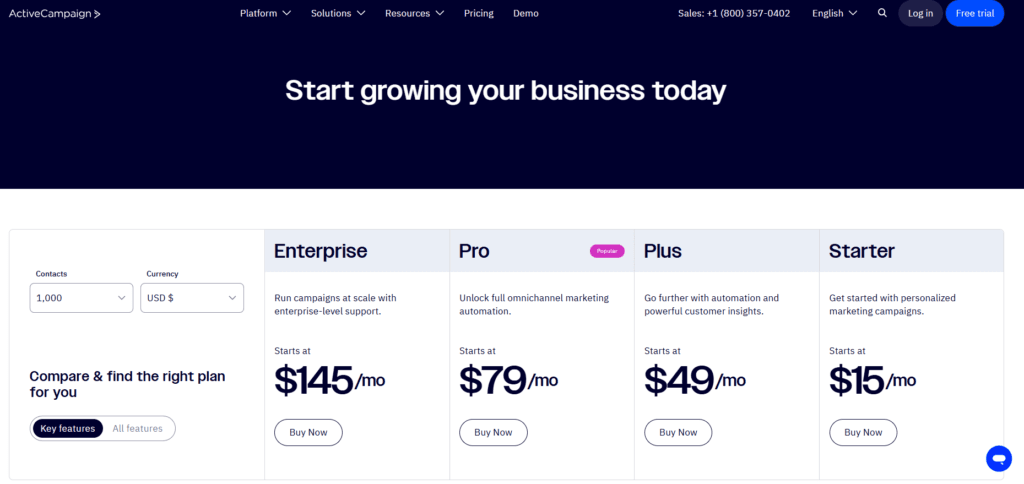
ClickFunnels: Pricing Based on Funnel Building and Features
When comparing ActiveCampaign vs ClickFunnels, ClickFunnels’ pricing is designed around funnel-building functionality, with different tiers that provide access to various funnel-building and marketing features. Key pricing details for ClickFunnels include:
- ClickFunnels Basic Plan: Starting at $149 per month, the Basic plan gives users access to funnel-building tools, email integrations, and the ability to create up to 20 funnels. This plan is suited for individuals or small businesses focusing on creating and optimizing sales funnels.
- ClickFunnels Platinum Plan: Starting at $199 per month, the Platinum plan includes additional features such as the ability to create up to 70 funnels, access to the Backpack affiliate program, and priority support. This plan is designed for businesses that need more funnels and advanced marketing tools.
- TwoCommaClub Plan: Starting at $2,497 per year (or $2,997 for the full package), the TwoCommaClub plan offers everything in the Platinum plan, along with access to exclusive marketing training and resources. This plan is ideal for experienced marketers or larger businesses looking to maximize their funnel-building potential and get access to high-level coaching.
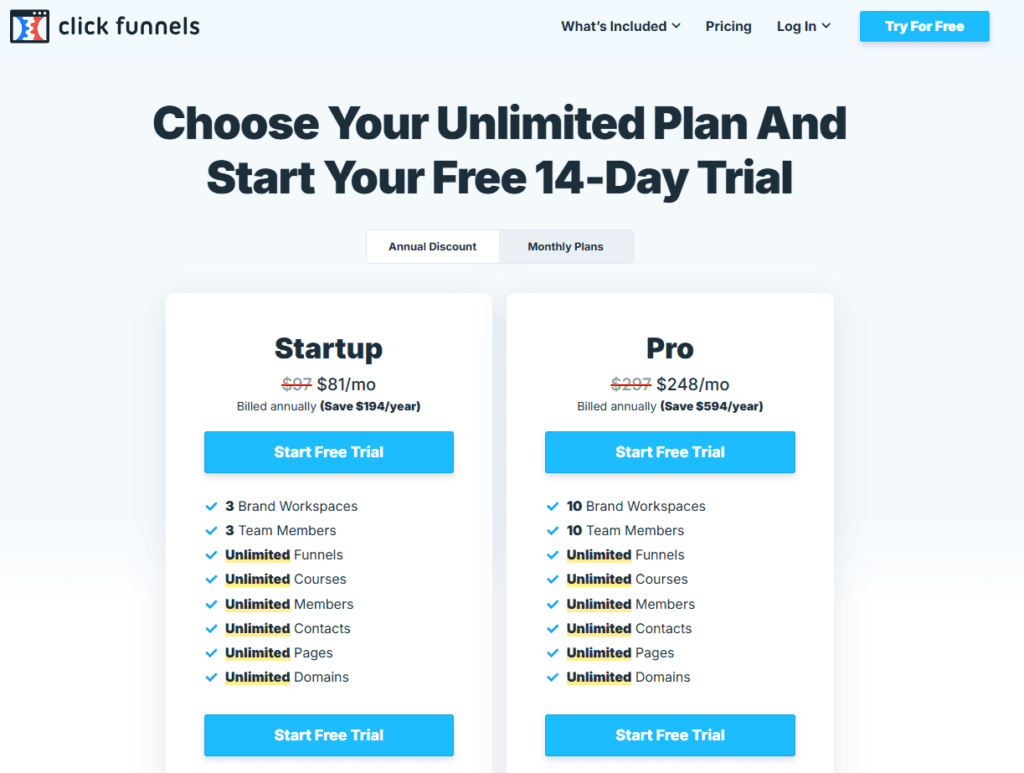
Key Differences in Pricing and Plans
When comparing ActiveCampaign vs ClickFunnels on pricing, there are notable differences in the value each platform provides:
- ActiveCampaign offers more flexible pricing based on the number of contacts, making it a better choice for businesses that focus on email marketing and CRM tools. Its tiered pricing allows businesses to scale as their customer base grows, with access to powerful automation features even at the lower price points.
- ClickFunnels, on the other hand, has higher starting prices due to its focus on funnel building and sales tools. While ClickFunnels’ plans are more expensive than ActiveCampaign’s, they offer extensive funnel-building features, including the ability to create and optimize a large number of funnels, integrate with payment processors, and access advanced marketing tools.

Target Audience and Use Cases
When comparing ActiveCampaign vs ClickFunnels, it’s essential to consider the target audience and specific use cases for each platform. While both tools serve businesses looking to enhance their marketing efforts, their core functionalities and features cater to different needs. Understanding which platform best aligns with your business goals will help you make an informed decision.
ActiveCampaign: Ideal for Businesses Focused on Email Marketing, Automation, and CRM
When comparing ActiveCampaign vs ClickFunnels, ActiveCampaign is best suited for businesses that need comprehensive email marketing, customer relationship management (CRM), and automation capabilities. It is an excellent choice for companies focused on lead nurturing, customer retention, and multi-channel marketing strategies.
Target Audience:
- Small to Medium-Sized Businesses (SMBs): ActiveCampaign is ideal for SMBs looking to scale their marketing efforts without needing extensive technical resources. Its affordable pricing and robust features cater to businesses that want to enhance their email marketing and CRM systems.
- Marketers and Sales Teams: Businesses that require advanced automation workflows, segmentation, and lead scoring will benefit from ActiveCampaign’s deep CRM and email marketing features.
- E-commerce Stores: ActiveCampaign integrates with major e-commerce platforms like Shopify and WooCommerce, making it a great fit for online stores looking to optimize customer communication and increase sales with automated email campaigns.
Use Cases:
- Email Marketing Automation: Automating email sequences and nurturing leads over time with personalized messages, making it easier to convert prospects into customers.
- Customer Relationship Management (CRM): Managing leads, contacts, and sales pipelines through a powerful CRM system, tracking interactions, and using data to improve customer relationships.
- Lead Scoring and Segmentation: Segmenting customers based on behavior and engagement, then using lead scoring to prioritize the most valuable prospects.
ClickFunnels: Best for Businesses Focused on Sales Funnels, Conversions, and Online Sales
When comparing ActiveCampaign vs ClickFunnels, ClickFunnels is specifically designed for businesses focused on building and optimizing sales funnels. Whether you’re a digital marketer, online entrepreneur, or business owner looking to sell products, ClickFunnels provides the tools to create high-converting sales funnels quickly and efficiently.
Target Audience:
- Entrepreneurs and Online Marketers: ClickFunnels is ideal for individuals and small businesses looking to launch sales funnels, whether for selling products, services, or online courses. Its intuitive funnel builder and sales optimization features are geared toward marketers who need a fast, easy way to create effective funnels.
- Coaches, Consultants, and Digital Product Creators: If you sell digital products, courses, or offer coaching services, ClickFunnels provides specialized templates and tools to sell and deliver those products via funnels.
- E-commerce Stores: Online stores that want to implement conversion-focused sales funnels for products, upsells, and order forms will benefit from ClickFunnels’ e-commerce features.
Use Cases:
- Sales Funnel Creation: Designing high-converting sales funnels from scratch, using customizable templates for landing pages, product pages, checkout forms, and upsell pages.
- Webinar Funnels: Building dedicated funnels for hosting and promoting webinars, turning attendees into customers through automated follow-up sequences.
- Membership Site Funnels: Creating funnels that lead to membership sites, providing content access or exclusive offers to customers who sign up.
Key Differences in Target Audience and Use Cases
The primary difference between ActiveCampaign vs ClickFunnels lies in their focus:
- ActiveCampaign is best suited for businesses that need a combination of email marketing, automation, and CRM to nurture leads and improve customer relationships. It’s ideal for businesses focused on ongoing customer engagement and multi-channel marketing campaigns.
- ClickFunnels caters to businesses and marketers focused specifically on creating sales funnels to convert visitors into customers quickly. It excels in funnel building for product sales, webinars, and membership sites, making it a top choice for those looking to optimize their sales process.
Pros and Cons
When comparing ActiveCampaign vs ClickFunnels, understanding the advantages and limitations of each platform will help you make an informed decision. Both platforms offer powerful tools, but they cater to different needs. Below, we’ll break down the pros and cons of each, helping you choose the right solution for your business.
ActiveCampaign: Pros and Cons
Pros:
- Comprehensive Email Marketing: ActiveCampaign excels in email marketing automation, offering a robust set of features like triggered email sequences, autoresponders, and dynamic content. It allows businesses to build highly personalized campaigns that engage customers at every stage of the buyer’s journey.
- Advanced CRM and Automation: ActiveCampaign’s CRM system allows you to manage customer relationships seamlessly, while its automation workflows help you nurture leads and automate sales processes. It’s an all-in-one solution for businesses looking to streamline marketing and sales efforts.
- Segmentation and Personalization: With powerful segmentation features, ActiveCampaign lets you target specific customer groups based on behavior, demographics, and engagement. This leads to more relevant and personalized campaigns, increasing the chances of conversions.
- Great Customer Support: ActiveCampaign offers excellent customer support, including live chat, email support, and extensive resources like webinars and tutorials.
- Scalable Pricing Plans: ActiveCampaign’s tiered pricing structure, based on the number of contacts, makes it flexible and suitable for businesses of all sizes, from small startups to larger enterprises.
Cons:
- Learning Curve: While ActiveCampaign is packed with features, it can be overwhelming for beginners. New users might take some time to get familiar with the platform’s interface and automation workflows.
- Limited Funnel-Building Features: ActiveCampaign focuses heavily on email marketing and CRM, but it lacks advanced funnel-building features that platforms like ClickFunnels offer. If you need a robust sales funnel builder, ActiveCampaign might not be the best fit.
- Higher Pricing for Advanced Features: As you move up the pricing tiers, ActiveCampaign can become relatively expensive for small businesses, especially those needing more advanced features like split testing and predictive sending.
ClickFunnels: Pros and Cons
Pros:
- Powerful Funnel-Building Features: ClickFunnels is the go-to tool for creating high-converting sales funnels. With a drag-and-drop builder, customizable templates, and funnel-specific tools, ClickFunnels makes it easy to create and optimize funnels for product sales, webinars, and memberships.
- Sales Funnel Focus: Unlike other platforms, ClickFunnels is specifically designed to help you optimize your sales process. Its funnel-centric approach makes it easier to turn traffic into customers, with tools like upsells, order bumps, and one-click sales processes.
- Webinar and Membership Funnels: ClickFunnels includes templates and features that make it easy to set up webinar funnels and membership site funnels, catering to online course creators, coaches, and digital product sellers.
- Built-in Affiliate Program: ClickFunnels includes the Backpack affiliate program, allowing users to set up and manage their own affiliate marketing campaigns directly within the platform.
- Integrations with Popular Tools: ClickFunnels offers seamless integrations with popular marketing tools, email platforms, and payment processors, allowing for a smooth workflow and better overall marketing efficiency.
Cons:
- High Starting Price: ClickFunnels’ pricing starts at $149 per month, which can be a significant investment, especially for small businesses or solopreneurs. The higher-tier plans, which include additional features like Backpack and Actionetics, can further increase costs.
- Not as Strong in Email Marketing: While ClickFunnels includes email marketing capabilities, it doesn’t offer the same level of sophistication or automation as ActiveCampaign. If email marketing and CRM are your main focus, ActiveCampaign is likely the better option.
- Complexity for New Users: ClickFunnels’ funnel-building features, while powerful, can be a bit complex for beginners. The steep learning curve may require more time and effort to fully utilize the platform’s capabilities.
- Focus on Funnels: If your main goal is email marketing or CRM, ClickFunnels may not be the best fit. The platform’s focus on sales funnels means it lacks the depth of features in those areas compared to ActiveCampaign.
Summary of Pros and Cons
Both ActiveCampaign vs ClickFunnels have their unique strengths and drawbacks. ActiveCampaign is ideal for businesses looking for an advanced email marketing solution, CRM, and automation workflows. However, it lacks advanced funnel-building features, which is where ClickFunnels shines. ClickFunnels is perfect for businesses focused on creating high-converting sales funnels, but its pricing and less robust email marketing capabilities may be a disadvantage for those looking for a more comprehensive marketing tool.
Conclusion and Final Recommendation
After comparing ActiveCampaign vs ClickFunnels across various factors, including features, pricing, ease of use, and target audience, it’s clear that both platforms excel in different areas. The best choice depends largely on your specific business needs and goals. Let’s summarize the key points to help you make the right decision for your business.
Key Takeaways:
- ActiveCampaign is ideal for businesses focused on email marketing, marketing automation, and customer relationship management (CRM). It offers powerful automation workflows, CRM features, and excellent customer support, making it a top choice for businesses that need to nurture leads, engage customers, and improve retention over time.
- ClickFunnels, on the other hand, is best for businesses focused on sales funnel creation and optimization. With its funnel-building tools, landing page templates, and built-in affiliate marketing system, ClickFunnels is a great choice for businesses looking to streamline their sales process and convert visitors into customers quickly.
Final Recommendation:
- Choose ActiveCampaign if your primary goal is to build relationships with leads and customers through advanced email marketing and automation. It’s an excellent choice for small to medium-sized businesses that need a comprehensive marketing and CRM tool at an affordable price. ActiveCampaign shines when it comes to personalized, targeted communication and nurturing customer journeys.
- Choose ClickFunnels if your main focus is to build high-converting sales funnels for selling products, running webinars, or creating membership sites. ClickFunnels is perfect for entrepreneurs, online marketers, and businesses that need a dedicated platform to build sales funnels, optimize conversions, and maximize revenue.
Both platforms offer a lot of value, but the decision ultimately comes down to whether you need a more robust email marketing automation platform (ActiveCampaign) or a powerful sales funnel builder (ClickFunnels).


